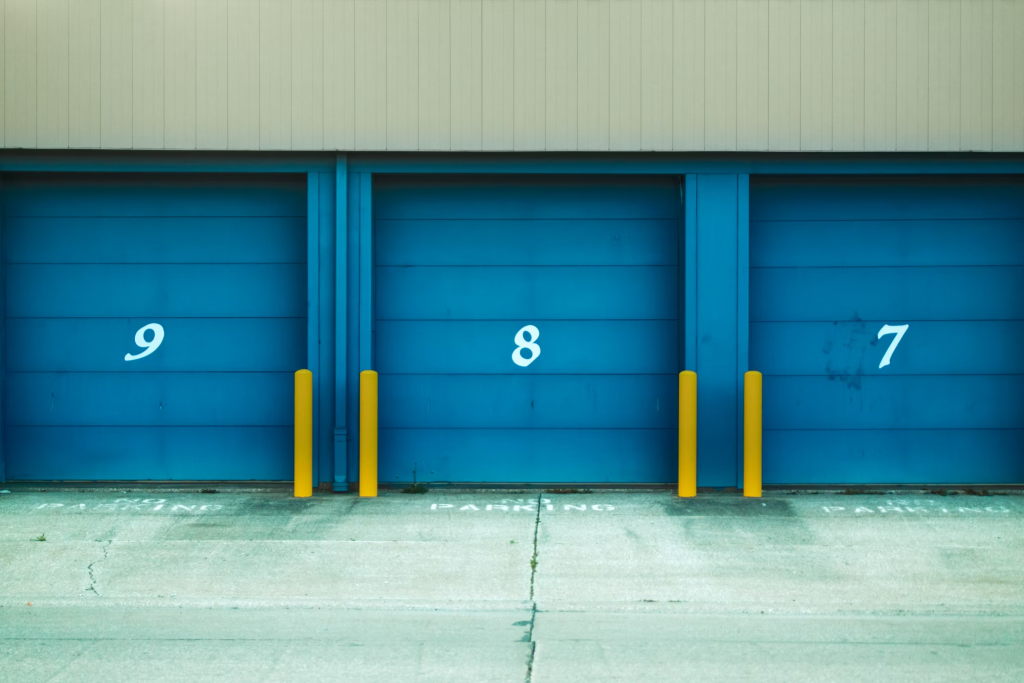A garage is a versatile space that can be easily transformed into an efficient storage area with careful planning. In an Australian context, climate considerations are crucial, as extreme temperatures and humidity levels can affect the condition of stored items. Start by organising the space, using shelving, hooks, and cabinets to maximise vertical storage. Clear bins or containers help protect items from dust and moisture.

Safety is paramount, so ensure hazardous materials are securely stored and that heavy items are placed in stable, easily accessible spots. Creating designated zones for different categories of items – tools, sporting goods, or seasonal gear – will improve accessibility and maintain order. By following these steps, your garage can become a functional, well-organised storage solution.
Step-By-Step Guide To Organising Your Garage
Step 1: Assess Your Needs And Plan The Layout
Evaluate What You Want to Store
Begin by identifying the items you plan to store. These could include:
- Seasonal equipment, such as camping gear, bicycles, or sports equipment.
- Tools and hardware for DIY projects.
- Holiday decorations and seasonal clothing.
- Non-perishable household items or surplus pantry supplies.
Sketch a Layout
Designing a layout is crucial to maximising space. Consider:
- Accessibility: Ensure frequently used items are easy to reach.
- Zoning: Divide the garage into sections for different categories (e.g., tools on one wall, sports gear in a corner).
- Vertical Space: Plan to use walls and overhead areas effectively to save floor space.
Step 2: Declutter And Clean
Sort Items
Before setting up your storage system, declutter:
- Sort items into categories: Keep, Donate, Sell, or Dispose.
- Be ruthless with items you haven’t used in a year.
Clean Thoroughly
A clean garage sets the stage for effective storage:
- Sweep the floor to remove dust, dirt, and debris.
- Clean walls and surfaces with a damp cloth and mild detergent.
- Check for pests or signs of mould, especially in coastal or humid areas.
Step 3: Address Structural And Environmental Factors
Climate Considerations
Australia’s climate varies greatly, so consider:
- Heat and Humidity: Use weather-resistant materials like galvanised steel shelves or plastic storage bins. In tropical areas, ensure proper ventilation to prevent mould.
- Cold and Dampness: Seal cracks and consider using a dehumidifier if your area experiences wet winters.
- Pests: Seal gaps around doors and windows to keep out insects, rodents, and snakes.
Flooring
Garages often have concrete floors, which can be dusty or prone to staining. Consider:
- Sealing the floor with epoxy paint for a durable and clean finish.
- Adding interlocking floor tiles or mats for comfort and insulation.
Lighting
Good lighting is essential for functionality and safety:
- Install LED fixtures for bright, energy-efficient illumination.
- Add task lighting near workbenches or specific storage areas.
Insulation
If you plan to store sensitive items (e.g., electronics, books), insulation can help regulate temperature:
- Insulate walls with batts or rigid foam panels.
- Install a weatherproof garage door to keep out drafts and rain.
Step 4: Install Storage Solutions
Shelving
Wall-mounted shelves are a garage staple:
- Choose materials like metal or heavy-duty plastic for durability.
- Adjustable shelving allows flexibility for different item sizes.
Cabinets
Lockable cabinets are ideal for tools, chemicals, or valuables:
- Look for corrosion-resistant options, especially in coastal areas.
- Opt for models with clear labels or transparent doors for easy identification.
Overhead Storage
Maximise ceiling space for seldom-used items:
- Use overhead racks or pulley systems for lightweight items like camping gear.
- Ensure installations are secure to prevent accidents.
Pegboards and Tool Racks
Pegboards are excellent for organising tools and small items:
- Customise layouts using hooks, baskets, and bins.
- Label each section to maintain organisation.
Bins and Containers
Plastic storage bins are versatile and protect items from moisture and pests:
- Use clear bins for easy visibility.
- Label each bin with its contents to simplify retrieval.
Workbenches
If your garage doubles as a workspace:
- Invest in a sturdy workbench with integrated storage.
- Use magnetic strips to store tools within easy reach.
Step 5: Organise Effectively
Categories Items
Group similar items together for efficiency:
- Sports gear in one section, tools in another.
- Seasonal items like Christmas decorations are stored higher or in less accessible spots.
Label Everything
Labelling prevents confusion and saves time:
- Use waterproof labels for durability.
- Create a map or inventory of where items are stored for reference.
Use Vertical and Horizontal Space
Maximise every inch:
- Hang bicycles or surfboards on wall racks.
- Store smaller items in stackable bins.
Step 6: Ensure Safety
Chemical Storage
If storing chemicals like paint, fertilisers, or cleaning products:
- Use a dedicated cabinet, preferably metal, with ventilation.
- Keep out of reach of children and pets.
Heavy Items
Store heavier items on lower shelves to prevent accidents:
- Avoid overloading shelves or racks.
- Ensure proper weight distribution for stability.
Fire Safety
Garages often house flammable materials:
- Keep fire extinguishers within reach.
- Avoid storing flammable liquids near electrical outlets.
Step 7: Regular Maintenance
Inspect and Clean
Set a routine to maintain your storage system:
- Inspect for signs of wear, pests, or moisture.
- Clean shelves, bins, and the floor periodically.
Reorganise Annually
As your needs change, update your storage system:
- Review items to discard or relocate.
- Adjust shelving or storage zones as needed.
Special Considerations For Australian Conditions
Cyclone And Bushfire Zones
In cyclone-prone areas, secure heavy items to prevent damage during storms. In bushfire-prone regions, avoid storing flammable items and ensure proper ventilation.
Coastal Areas
Coastal garages are more susceptible to corrosion. Use stainless steel or galvanised materials and protect items from salt exposure.
Urban Vs Rural Settings
Urban garages may require compact storage solutions due to space constraints, while rural garages can accommodate larger setups, such as freestanding shelves or outdoor storage sheds.
Sustainable Storage Tips
Reusing and upcycling old furniture or materials is an excellent way to create functional and unique pieces while reducing waste. For example, you can repurpose old bookshelves as storage racks, giving them a new lease on life. Crates or pallets, often discarded, can be transformed into DIY shelves or tables with a little creativity.
Choosing eco-friendly materials is another key aspect of sustainable living. Opting for storage bins made from bamboo or recycled plastic not only reduces your carbon footprint but also supports environmentally conscious choices. Embracing these practices helps conserve resources and creates stylish, personalised home décor.
Conclusion
Transforming your garage into a functional storage space can greatly enhance your home’s organisation. By carefully assessing your needs, addressing environmental factors, and choosing the right storage solutions, you can create a practical and durable setup.
Regular maintenance will ensure your garage remains an efficient and safe storage area for years to come. Whether you’re dealing with Australia’s coastal conditions or preparing for its variable weather, these steps will help you optimise your garage and keep your belongings secure and accessible.
Frequently Ask Question
What Safety Precautions Should I Take When Organising A Garage?
When organising your garage, always store hazardous materials such as chemicals, paint, or cleaning supplies in locked, well-ventilated cabinets. Store heavier items on lower shelves to avoid injuries when lifting. It’s also crucial to have a fire extinguisher easily accessible and ensure that flammable materials are kept away from heat sources and electrical outlets.
What Are The Benefits Of Using Clear Plastic Bins For Storage In A Garage?
Clear plastic bins allow for easy visibility, so you can quickly locate the items inside without opening each container. They also protect against dust, dirt, and moisture, which is particularly important in garages with fluctuating temperatures or humidity. Label the bins for even more efficiency, making it easier to keep track of your stored items.
How Often Should I Reorganise My Garage For Optimal Storage?
It’s a good idea to reorganise your garage at least once a year to ensure that your storage system is still meeting your needs. This allows you to discard or donate items you no longer need, and it gives you a chance to reassess your storage solutions. Periodic maintenance checks for pests, moisture, and wear and tear will also keep the space safe and functional over time.
Click Shepparton Storage Solutions For More Details
